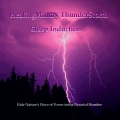- By studying how the brain absorbs information, and the proper frequencies to make it operate at maximum efficiency, we have found a way to improve this process so you can absorb, store, and categorize information better than you thought previously possible. We start off in the Beta range to focus your brain's learning process and then stimulate connections between neurons to improve your IQ permanently. By focusing on your intelligence, it feels perfectly natural and requires little effort on the part of the user: IQ Isochronic
- Visual Ray Psionics, continued
- Activate Your Mind Powers, Remove Your Fears, Stand above the rest as a Remote Viewer.
- Remote Viewing, ESP and Telepathy Binaural Beat Brainwave Entrainment Package
- Healing MindN Power Circle
- Beyond Being: distinct brainwave patterns associated with intense experiences such as deep meditation, emotional detachment, spiritual experiences, lucid dreaming and even out-of-body experiences.....
- Way of the Mind Gate Newsletter
- Law of Attraction - Your Invisible Power: Based on Genevieve Behrand's book, this subject is explored from a spiritual trance state. See the new HealingMindN Meditation Video!
- 7 Individual Chakra Isochronics Package
- Collective DNA Consciousness:
DNA forms an intelligent network which is influenced and programmed by words and frequencies. Includes relevant facts on psychic phenomena. - Learn how binaural harmonics brainwave entrainment induce flashes of creativity, insight, and wisdom. Explore tools for heightened consciousness.
- Law of Attraction - Your Invisible Power: Based on Genevieve Behrand's book, this subject is explored from a spiritual trance state. See the new HealingMindN Meditation Video!

- Spiritual Cinema Circle
- Endorphin Release
- Relaxation Pack
- Overall Good Health
- Sexual Healing MindNN
- Heart Chakra
Peg System of Memory from How to Develop a Super Power Memory
|
Peg System of Memory exerpted from How to Develop a Super Power Memory by Harry Lorayne, the man with the most powerful memory in the world, show's you a sample of how to use your wonderful imagination to memorize any list in any order.
Experience HealingMindN |
The PEG system will show you how to count with objects (which can be pictured) instead of numbers. This is not a particularly new thought. It was first introduced by Stanislaus Mink von Wennsshein along about the year 1648. In the year 1730, the entire system was modified by Dr. Richard Grey, of England, who called the idea, letter or "number equivalents." The idea was great, but the method just a bit clumsy because he used vowels as well as consonants in the system. Since 1730, however, many changes have been made, although the idea is basically the same. In order for you to learn the method, you must first learn a simple phonetic alphabet. No need for dismay "� it consists of only ten sounds, and with my help, it shouldn't take you more than ten minutes to learn them. This will be the most worthwhile ten minutes you've ever spent, since this phonetic alphabet will eventually help you to remember numbers, or numbers in conjunction with anything else, in such a way that you never would have thought possible. I will give you now, a different consonant sound for each of the digits 1, 2, 3, 4, 5, 6, 7, 8, 9 and 0. These you must commit to memory. I'll make this simple for you by giving you a "memory aid" for remembering each one. Read them carefully and with your full attention.
If you will attempt to picture the little memory aid that I have given with each one, you should remember them easily. Please keep in mind that the letters are not important; we are interested in the sound only. That's why I call this a phonetic alphabet. With some of the digits I've given more than one letter, but the phonetic sounds of these letters are the same, in each case. Your lips, tongue and teeth are used in the same identical way to sound P and B, or F and V, or J, sh, ch, etc. The sound of the letter G in the exclamation, "gee" would, according to the phonetic alphabet, represent #6, whereas the same letter in the word, "go" would represent #7. The letter C in the word "coat" represents #7, the same letter in the word "cent" would represent zero, since it is pronounced with the s sound. The letters Kn in the word, "knee" or "knife" would stand for #2, because the K is silent. Remember then, it is the sound that's important, not the letter. Now, look this over once:
Turn away from this page and see if you remember the sounds from one to zero. Test yourself on remembering them out of order, too. You should know them all by now. I could give you one more aid for memorizing these sounds, by telling you to remember this nonsense phrase: TeN MoRe LoGiC FiBS. This will help you to memorize the sounds in order from one to zero. It is necessary, however, to know them out of sequence - so you shouldn't have to rely on the nonsense phrase too long - the original memory aids that I gave you, should suffice. This simple phonetic alphabet is of utmost importance, and the sounds should be practiced until they are second nature to you. Once they are, the rest of the Peg system will be a cinch for you. Here is a method of practice to help you learn the sounds thoroughly: Anytime you see a number, break it down into sounds in your mind. For example, you might see the number 3746 on a license plate; you (might) be able to read it as m, k, r, j. You might see an address 85-29, and be able to read it as fl-np. You can look at any word and practice breaking it down into numbers. The word "motor" would be 314. The word "paper" is 994, and "cigarette" would break down to 0741. (The double tt is the same sound as a single t, therefore it represents #1, not #11.) None of the vowels, a e i o or u have any meaning at all in the phonetic alphabet; neither do the letters w, h or y. (Remember the word, "why"). Before going any further, complete the following exercises. The first column of words should be changed to numbers, and the second column of numbers must be broken into sounds (use the text areas):
You are ready now to learn some of those "pegs" I mentioned. I would suggest however, that you know the sounds thoroughly before you go on to the pegs themselves. Phonetic Peg Guide 1 - 10All right, since we now know a certain phonetic sound for all the digits from one to zero, you can see that we can make up a word for any number, no matter how many digits it contains. For example, if we wanted to make up a word for #21, we could use any of the following: net, nut, knot, gnat, nod, neat, note, knit, etc., because they all begin with the n sound (#2) and end with the t or d sound (#1). For #14 we could use tear, tire, tore, door, tier, deer, dire, dray, tree, etc., because they all begin with the t or d sound for #1, and end with the r sound for #4. Remember that we are interested in the consonant sounds only. Do you get the idea of how I formed those words? If you do, then I can go ahead and give you the first few "pegs." Each one of the peg words that I will give you has been specially chosen because it is comparatively easy to picture in your mind, and that is important.
As I said, it is important to be able to picture these objects, so I will give explanations of all those where I think an explanation is necessary.
Once you decide on a particular mind picture for this, or for any of the pegs, use that particular picture always. You can see how I arrive at these words. They all have only one consonant sound, and that one sound is the one representing the digit of the number.
Ordinarily it would be a little difficult to remember ten completely unassociated words as I have just given you. Since the peg word for any number must contain certain sounds only, you'll find that it is easy. As a matter of fact, if you have read the ten words once, with a little concentration, you probably already know them. Try it! When you say the number to yourself, think of its sound first, then try to remember the peg word. Test yourself in and out of order. You should know that # 3 is "ma," without repeating, "tie," "Noah," ma! To show you how fantastic your memory can be with my little memory aids, you can do this until the words become second nature to you; If you come to a number, and you think you can't remember its peg - think of the sound for that number, and say any words that come to your mind, starting with, and containing that particular consonant sound only. When you say the right one, it will sort of "ring a bell" in your mind, and you'll know that that's the right one. For instance, if you couldn't think of the peg word for #1, you might say to yourself, "toy, tow, tea, tie"; as soon as you say "tie," you'll know that that is the correct word. You can see, now, what I've done. I have built you up slowly with each item. First I gave you an aid to remember the phonetic sounds, now those sounds are your aid to remember the very important peg words; and the peg words will help you to remember anything where numbers are involved, so make sure you know them well.
Now, if you. feel that you know the first ten peg words thoroughly, I'll show you how to use them for remembering objects in and out of order. I'll give you ten objects, out of sequence, and prove to you that you can remember them after reading them only once!
The first one listed is #9 - purse. All you have to do is to make a ridiculous and/or illogical association of the peg word for #9, which is "bee," and purse. If you have realized the importance of actually "seeing" these ridiculous associations in your mind, you'll have no trouble. For this first one, you might see yourself opening a purse and a swarm of bees fly out of it, stinging you. Just "see" the picture for a moment, then go to the next one. #6(shoe) - cigarette. You can see yourself smoking a shoe instead of a cigarette, see millions of cigarettes falling out of a shoe, or you can see yourself wearing gigantic cigarettes instead of shoes. #4(rye) - ashtray. You might see yourself dropping ashes into a scooped out loaf of rye bread instead of an ashtray, or, you're buttering an ashtray instead of a slice of rye bread. I am giving you one or more ways that each object can be associated ridiculously with its peg word. You are to use only one of these pictures for each one. Use one that I give, or one that you think of yourself. The first illogical picture that comes to mind is usually the best one to use, because that is the one that will come to mind later on. I'll help you with all ten of them, since it is the first time you are attempting this method; but after this you should be able to do it without my help. #7(cow)- salt-shaker. Picture yourself milking a cow, but the cow has salt-shakers instead of udders. Or, see saltshakers coming out instead of milk. #3(ma) - lamp. You can picture your mother wearing a gigantic lamp for a hat. See the lamp going on and off. (Action-Rule #2.) #5 (law) - typewriter. You might "see" a policeman putting handcuffs on a typewriter, or you can see a typewriter walking the beat, swinging a club, like a cop.
#2 (Noah) - Television set. You might picture Noah sailing on a television set instead of an ark. #8 (ivy) - wrist watch. You can see millions of wrist watches growing all over the side of your house, instead of ivy; or, you can see yourself wearing ivy on your wrist instead of a watch. # 1 (tie) - fountain pen. Picture yourself wearing a gigantic fountain pen instead of a tie, or you might see yourself writing with your tie, instead of a fountain pen. # 10 (toes) - telephone. See yourself dialing with your toes, or, you pick up the telephone, but it turns out that you're holding your toes. (Probably talking to a heel.) Now-take a piece of paper, number it from one to ten, and try to fill in the objects in order, without looking at the book. When you come to #1, just picture your peg word, tie, and the ridiculous picture of your wearing a fountain pen instead of a tie will come back to you immediately. So you know that # 1 is fountain pen. When you picture Noah, you will see him on a television set instead of an ark; so you know that # 2 is television set. You will remember them all quite easily. The wonderful part about it, is that you also know them out of sequence. You can see, of course, that it makes no difference. You can also call them off backwards-just think of the peg word for # 10 (toes) and work up to "tie." Memory Parlor Game SuggestionYou should now be thoroughly amazed at your own ability. But wait! Why not memorize twenty-five objects instead of only ten? Well, at the end of this chapter you will find the peg words for numbers 11 through to 25. Please learn those just as you learned the first ten. When you know them perfectly, try this on your friends. Have them number a sheet of paper from one to twenty or twenty-five, or as many as you wish (to show off with). Then have him call out any of those numbers, haphazardly, and then name any tangible object. Ask him to write that object alongside the number called. Have him do that until every number has an object next to it. Now call them right back to him from # 1 right down to the last one. Then have him call any number, and you immediately give him the object, or have him call any object and you tell him what number it is!! Don't let that last part throw you, there is nothing to it. If I was to ask you now what number salt-shaker was, you would "see" the ridiculous picture of a cow with salt shakers instead of udders. Since "cow" is the peg for #7, then you know that salt-shaker was #7. Watch the look of astonishment on your pal's face when you're through! Phonetic Peg Guide 11 - 25Please do not go on to the next chapter (available in the ebook) until you are sure that you know all the peg words from 1 to 25:
Remember, please, that once you decide on a particular picture for any of the peg words, you are to use that picture all the time. If you know the pegs from 1 to 25 thoroughly, (and I suggest that you go no further until you do), and if you feel confident, (or even if you don't) why not take test #2 in Chapter #3 once again (in the ebook). Try it, and then compare your present score with the original one! Learn how to Get Your Personal Copy of How to Develop a Super Power Memory by Harry Lorayne - visit Super Power Memory Course |
















